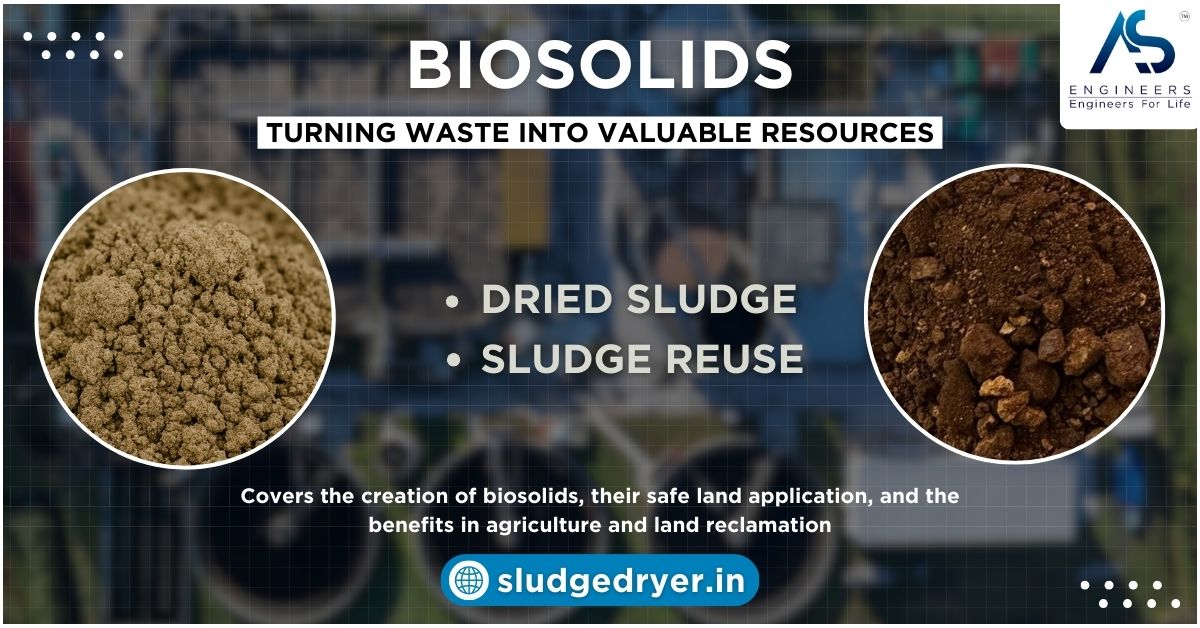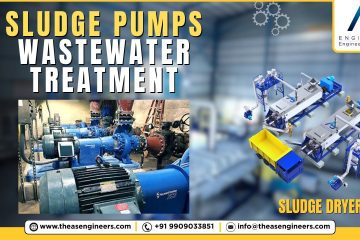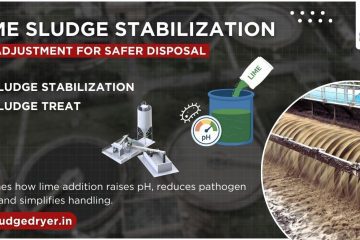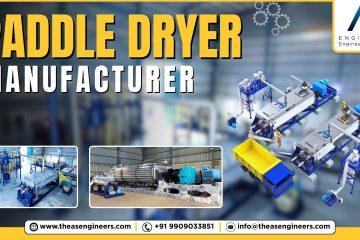Did you know that an immense portion of the world’s waste stream comes from wastewater treatment plants? Amid these vast operations emerges a valuable product often overlooked: the biosolid. Far from being mere waste, biosolids can enrich soil, boost crop yields, and even reduce our carbon footprint when handled effectively.
In this in-depth guide, you will discover how biosolids come into being, the benefits of dried sludge for agriculture, and how sludge reuse strategies can transform environmental liabilities into opportunities. Whether you manage a municipal plant, farm, or industrial facility, keep reading to understand how turning sludge into biosolids can optimize sustainability, profit, and public health.
Table of contents
- 1. What Are Biosolids?
- 2. From Sludge to Biosolid: The Journey
- 3. Core Steps in Biosolid Production
- 4. The Value Proposition of Biosolids
- 5. Regulations and Safety Considerations
- 6. Applications and Methods of Sludge Reuse
- 7. Real-World Case Studies
- 8. Challenges and Practical Solutions
- 9. Frequently Asked Questions (FAQ)
- 10. Myth-Busting Section
- Conclusion
1. What Are Biosolids?
A biosolid represents a nutrient-rich, treated sludge derived from municipal wastewater treatment processes. By the time sludge is transformed into a biosolid, it has undergone rigorous physical, chemical, and biological processes that ensure it is safe for land application or other beneficial uses. Depending on the treatment level, biosolids may be solid or semisolid, each with particular advantages and applications.
1.1 Evolution of the Term
Years ago, the material now called “biosolids” was treated sludge, often viewed as mere waste in need of disposal. Over time, industry experts, municipalities, and policymakers recognized the potential of well-treated sludge, coining the term “biosolids” to emphasize its beneficial qualities rather than its status as a leftover product.
1.2 Distinguishing Sludge from Biosolids
- Sludge: Untreated or partially treated material that still harbors pathogens and contaminants.
- Biosolid: Fully treated sludge meeting specific regulations and safety benchmarks, making it usable for agriculture, land reclamation, or even landscaping.
Understanding the difference between raw sludge and finished biosolids is vital, since it influences every aspect of handling, from transport requirements to end uses.
2. From Sludge to Biosolid: The Journey
Though many think of wastewater treatment as limited to liquid processes, the management of solid byproducts, such as sludge, presents a crucial dimension. Transforming raw sludge into a safe, beneficial biosolid demands multiple steps that reduce harmful pathogens, lower water content, and concentrate valuable nutrients.
2.1 Wastewater Input
Houses, industries, and commercial establishments discharge wastewater into municipal sewers. This water carries suspended solids, organic matter, chemicals, and microorganisms. At the treatment plant, screens and grit chambers capture large debris.
2.2 Solid-Liquid Separation
The wastewater is then routed through clarifiers (primary and secondary) to separate solids. These settled or skimmed solids become “sludge.” Depending on the plant’s configuration, that sludge may combine primary and secondary streams.
2.3 Stabilization and Conversion
Through digestion (anaerobic or aerobic) and other treatment methods (lime addition, composting, or thermal processes), raw sludge transforms into safer, more stable biosolids. This ensures minimal odor, reduced pathogens, and a product that can enrich soils or fuel certain industrial processes.
3. Core Steps in Biosolid Production
Turning sludge into a usable biosolid involves a series of well-orchestrated procedures. Although plants differ in their exact methodologies, the core steps below are typical of many modern facilities.
3.1 Screening and Grit Removal
Even before sludge formation, wastewater passes through coarse and fine screens to remove large solids—like plastics, wood, or rags—that could damage pumps and other equipment. Grit chambers settle out sand, gravel, and other abrasive particles.
Benefits:
- Protects downstream equipment
- Lowers wear-and-tear costs
- Improves efficiency of subsequent sludge handling
3.2 Primary and Secondary Treatment
- Primary Treatment: Sludge forms when heavier solids settle out in primary clarifiers. Floating materials (oil and grease) are often skimmed.
- Secondary Treatment: Biological processes (e.g., activated sludge or trickling filters) remove dissolved and suspended organic matter. Secondary sludge—primarily composed of microbial biomass—is drawn from the secondary clarifiers.
The combination of these two sludge streams typically forms the feedstock for biosolid production.
3.3 Stabilization
Stabilization is key to creating a product suitable for land application or reuse. Methods include:
- Anaerobic Digestion: Microorganisms break down organic material in oxygen-free digesters, producing biogas (methane) that can power the plant.
- Aerobic Digestion: Oxygen-consuming microbes decompose organic matter, requiring continuous aeration.
- Lime Stabilization: Adding lime raises the pH, killing pathogens and reducing odor.
- Thermal Hydrolysis: High-pressure, high-temperature treatments disintegrate organic cells for easier breakdown in subsequent digestion steps.
Each method aims to reduce pathogens, minimize odor, and create a more chemically stable material.
3.4 Dewatering and Dried Sludge
After stabilization, the material contains a lot of water. Removing excess water is critical to reduce transportation and application costs. Plants typically employ:
- Belt Filter Presses: Sludge is squeezed between porous belts.
- Plate and Frame Filter Presses: Pressure is applied in a series of chambers.
- Centrifuges: Rapid spinning forces water out, leaving a solid “cake.”
- Screw Presses: A gradual compression mechanism yields dried sludge.
Achieving dryness levels of 20–35% is common, but advanced drying methods can exceed 90%, creating a pelletized or granular product ideal for land application or incineration.
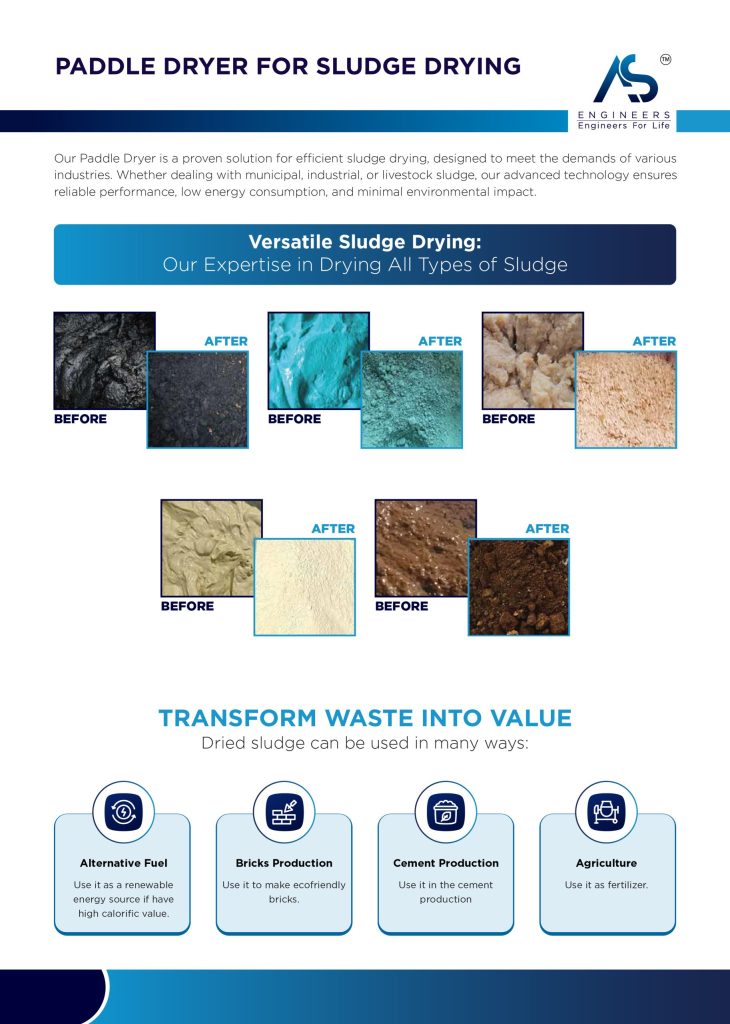
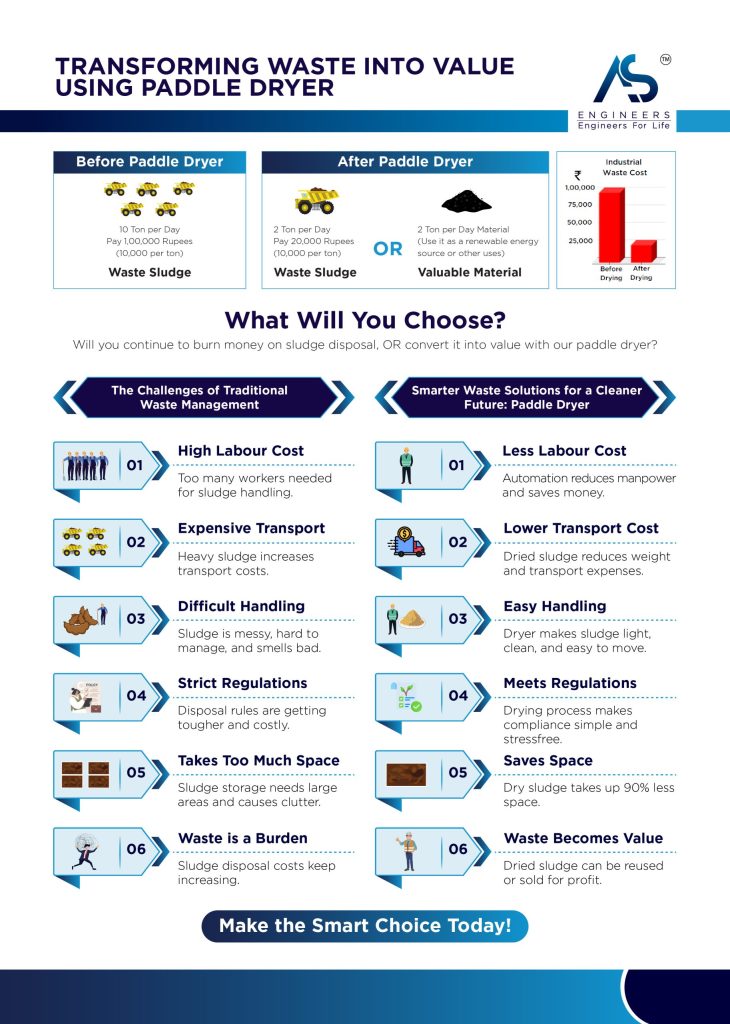
3.5 Advanced Treatment
Some facilities go beyond basic stabilization and dewatering to create Class A biosolids (lowest pathogen content). They may:
- Compost the dewatered sludge with wood chips or yard waste, generating a humus-like product.
- Thermally Dry the sludge to near 100% solids, producing pellets used as fertilizer or fuel.
- Pasteurize to kill pathogens via sustained heat.
- Alkaline Stabilization with materials that elevate pH to near 12.
Such advanced processes enhance the product’s safety, marketability, and ease of handling.
4. The Value Proposition of Biosolids
A biosolid is more than just a disposal headache. When properly treated and monitored, it carries tangible benefits for agriculture, industry, and communities at large.
4.1 Agricultural Advantages
Biosolids deliver essential nutrients—nitrogen, phosphorus, potassium, and micronutrients—directly to the soil. For many farmers, using biosolids can lower fertilizer costs, enrich soil organically, and improve harvest yields. Unlike synthetic fertilizers, biosolids often release nutrients more slowly, providing sustained crop nutrition over time.
4.2 Soil Health and Structure
Beyond pure nutrition, biosolids contain organic matter. This organic fraction helps:
- Boost Water Retention: Especially important in arid or drought-prone regions.
- Enhance Soil Aeration: Prevents compaction and promotes healthy root growth.
- Support Beneficial Microbes: Healthy soil microbes improve nutrient cycling and plant resilience.
For land reclamation projects (e.g., restoring mining sites or degraded soils), biosolids can jump-start vegetation growth and stabilize the landscape.
4.3 Potential for Energy Recovery
Certain production methods—like anaerobic digestion—produce biogas. This gas can power on-site generators, heat digesters, or even feed back into the power grid. Some advanced facilities refine methane into biofuel, demonstrating how sludge can be an energy source, not just a waste product.
4.4 Environmental Sustainability
By reusing nutrients, biosolids reduce dependence on synthetic fertilizers produced from finite resources. They also divert sludge from landfills, cutting greenhouse gas emissions. In effect, the entire cycle of sludge reuse underscores a circular economy model—turning what was once discarded into a valuable commodity.
5. Regulations and Safety Considerations
Managing biosolids responsibly requires adherence to strict guidelines. Governments worldwide impose regulations that dictate how sludge is processed, tested, and applied, ensuring public health and environmental integrity.
5.1 Classification of Biosolids
In many countries, biosolids are divided into classes based on pathogen levels and trace contaminants. For instance:
- Class A Biosolids: Pose minimal risk for pathogens, often permissible for home gardens and public distribution.
- Class B Biosolids: Contain low but detectable pathogen levels. Land application is allowed under certain management practices (e.g., restricted public access and harvest intervals).
Each class determines how and where biosolids can be used.
5.2 Pathogen Reduction Standards
Facilities aiming to produce Class A biosolids might use advanced processes like composting at high temperatures, heat drying, or extended digestion to eradicate pathogens. Monitoring for fecal coliforms, Salmonella, and viruses is standard, often regulated to ensure levels remain below permissible thresholds.
5.3 Heavy Metals and Contaminants
Biosolids may contain metals such as lead, mercury, or cadmium if the wastewater originated from industrial sources. Regulators set maximum allowable concentrations. Regular testing is imperative, as exceeding these limits can restrict or prohibit land application.
Emerging Concerns:
Recent attention surrounds contaminants like PFAS (“forever chemicals”) and microplastics. Regulations may tighten, making ongoing analysis crucial to remain compliant and safe.
5.4 Documentation and Reporting
Operators must maintain records detailing:
- Volume of biosolids produced
- Processing conditions (e.g., digestion temperature, composting duration)
- Lab test results for pathogens, metals, and other parameters
- Application sites and rates, especially for land spreading
Transparency not only ensures compliance but also builds public trust.
6. Applications and Methods of Sludge Reuse
One of the most appealing aspects of biosolids is their versatility. They can benefit a host of sectors, from rural agriculture to urban landscaping, all while promoting sustainability.
6.1 Land Application and Farming
Biosolid application on cropland typically follows guidelines concerning pH, nutrient loading, and proximity to water sources. By matching biosolid nutrient profiles to crop needs (corn, wheat, hay, etc.), farmers optimize growth while cutting synthetic fertilizer expenses. This synergy underscores how effective sludge reuse can be profitable and ecologically sound.
6.2 Land Reclamation
Areas degraded by mining, overgrazing, or urban development can benefit from biosolid amendments that restore fertility and stabilize soils. By planting vegetation over these revitalized plots, land managers reduce erosion, enhance habitat, and potentially return land to productive or recreational use.
6.3 Forestry and Compost Blends
Forestry operations often use dried sludge or partially dried biosolids as a slow-release fertilizer for seedlings. They might also blend biosolids into compost with wood chips, sawdust, or yard trimmings. This synergy yields a stable, humus-like product for large-scale reforestation or ornamental horticulture.
6.4 Urban Landscaping and Soil Blends
Biosolids can be mixed into topsoil for public parks, golf courses, or roadside landscaping. Their organic content helps maintain greener lawns with reduced watering. Some municipalities bag pelletized biosolids for consumer use, encouraging local gardeners to fertilize lawns and flower beds.
7. Real-World Case Studies
7.1 Municipal Innovation in North America
A mid-sized city in the United States faced rising landfill costs and community concerns about waste incineration. The local wastewater treatment plant upgraded its anaerobic digesters, capturing biogas to run a combined heat and power system. They also introduced advanced thermal drying, producing Class A biosolids for farmland. Within two years, the plant offset significant energy costs, reduced waste disposal expenses, and created strong partnerships with area farmers.
7.2 Ecological Restoration in South America
In a region severely affected by mining activities, a consortium of local authorities and environmental NGOs opted to reclaim large tracts of eroded land. They partnered with a nearby wastewater plant to apply Class B biosolids. Over five years, vegetation cover expanded, water runoff quality improved, and local communities found new livelihoods in agroforestry projects on once-barren land.
7.3 Sustainable Forestry in Northern Europe
A paper and pulp mill integrated advanced sludge treatment to reduce the presence of woody fibers in the wastewater byproducts. After composting, the resulting biosolid-enriched mulch was used in local reforestation initiatives. Tree saplings planted in treated plots showed robust growth and disease resistance, underscoring biosolids’ role in boosting forest health.
8. Challenges and Practical Solutions
Despite numerous benefits, producing and using biosolids can be complex. Below are some common obstacles and how facilities and communities can address them.
8.1 Public Perception and Odor
Challenge: Even the term “sludge” can elicit negative reactions. Residents often worry about odors, pathogens, or property devaluation near land application sites.
Solution: Strong community outreach is essential. Hosting open houses at treatment facilities, sharing lab test results, and explaining best management practices can alleviate fears. Innovations like enclosed composting or injection methods also reduce odors.
8.2 Transportation and Logistics
Challenge: Biosolids—especially if partially dewatered—can be bulky and costly to transport.
Solution: Aim for higher solid content via improved dewatering or drying technologies. Where feasible, locate farmland or reclamation sites close to treatment plants to cut down on hauling expenses. Some regions utilize pipeline systems or on-site pelletizing to streamline distribution.
8.3 Regulatory Shifts
Challenge: Evolving rules on heavy metals, PFAS, microplastics, or nutrient limits can suddenly make certain biosolids less acceptable for land application.
Solution: Stay ahead of regulations through proactive testing and process improvements. Source reduction (monitoring industrial discharges for harmful chemicals) helps keep sludge cleaner from the outset.
8.4 Heavy Metal Management
Challenge: Industries connected to municipal sewer lines can contribute metals that accumulate in sludge.
Solution: Develop pretreatment programs requiring industries to reduce or treat metal-laden wastewater before discharge. Routine sampling ensures metals remain within allowable ranges for beneficial reuse.
8.5 Seasonal Constraints
Challenge: Wet, snowy, or frozen ground complicates land application.
Solution: Store dewatered or dried sludge until conditions improve. Some facilities invest in greenhouse-style drying beds or dedicated indoor storage, ensuring steady production of usable biosolids year-round.
9. Frequently Asked Questions (FAQ)
Q1: Are biosolids the same as compost?
Biosolids result from the treatment of sewage sludge, while compost can come from various organic sources like yard waste, food scraps, or manure. Some biosolids are blended with carbon-rich materials to create a compost-like product, but pure biosolids and compost differ in origin and composition.
Q2: Does using biosolids contaminate food crops?
When producers follow strict pathogen reduction, heavy metal limits, and application guidelines, biosolids are generally safe for food crops. Many national regulations enforce waiting periods between biosolid application and harvesting to ensure public health.
Q3: How do I know if biosolids are safe to use in my garden?
Look for Class A biosolids, which meet the highest safety standards. Municipalities often provide details about the product’s nutrient content, metal levels, and pathogen testing.
Q4: Can dried sludge generate dust issues?
Pelletized or granular biosolids can indeed create dust if excessively dry. Proper handling—like lightly moistening them or using enclosed spreaders—reduces airborne particles.
Q5: Are biosolids suitable for organic farming?
Standards vary by certifying body and region. Some organic regulations do not allow biosolids, while others permit them if they meet stringent processing criteria. Always confirm with local organic certification guidelines.
10. Myth-Busting Section
Myth 1: “All Sludge Is Toxic”
Reality: Untreated or poorly managed sludge can pose health risks. However, biosolid production involves processes that drastically lower pathogens and contaminants, making many biosolids safe and beneficial for land application.
Myth 2: “Biosolids Always Smell Terrible”
Reality: Odor depends on the treatment process. Well-stabilized, dried sludge, or composted biosolids typically have an earthy smell, not the foul odor associated with raw sewage.
Myth 3: “No Crops Will Grow on Biosolid-Amended Land”
Reality: Numerous studies show that plants thrive in soils amended with biosolids. The organic matter helps with nutrient availability, moisture retention, and improved yields.
Myth 4: “There’s Little Oversight on Sludge Reuse”
Reality: Biosolid applications are regulated at multiple levels (national, state, and local). Facilities must follow strict testing and documentation protocols, ensuring safe handling and distribution.
Myth 5: “Biosolids Are Just a New Name for Waste”
Reality: “Biosolid” reflects the resource potential of properly treated sludge—nutrients, organic matter, and minimal contaminants. It underscores the transformation from waste to a valuable commodity.
Conclusion
The journey of converting raw sewage sludge into a beneficial biosolid underscores how modern waste management can balance efficiency, economic returns, and environmental stewardship. By focusing on key processes—stabilization, dewatering, drying—and maintaining rigorous safety standards, communities and industries alike can embrace sludge reuse as part of a circular economy. Whether you explore dried sludge for agriculture, land reclamation, or forestry, the essential takeaway is clear: strategic biosolid programs can cut costs, reduce landfill dependence, and help cultivate healthier soils. Share your thoughts below, subscribe for more insights, and check out related guides to deepen your expertise on this valuable, often underappreciated resource.

